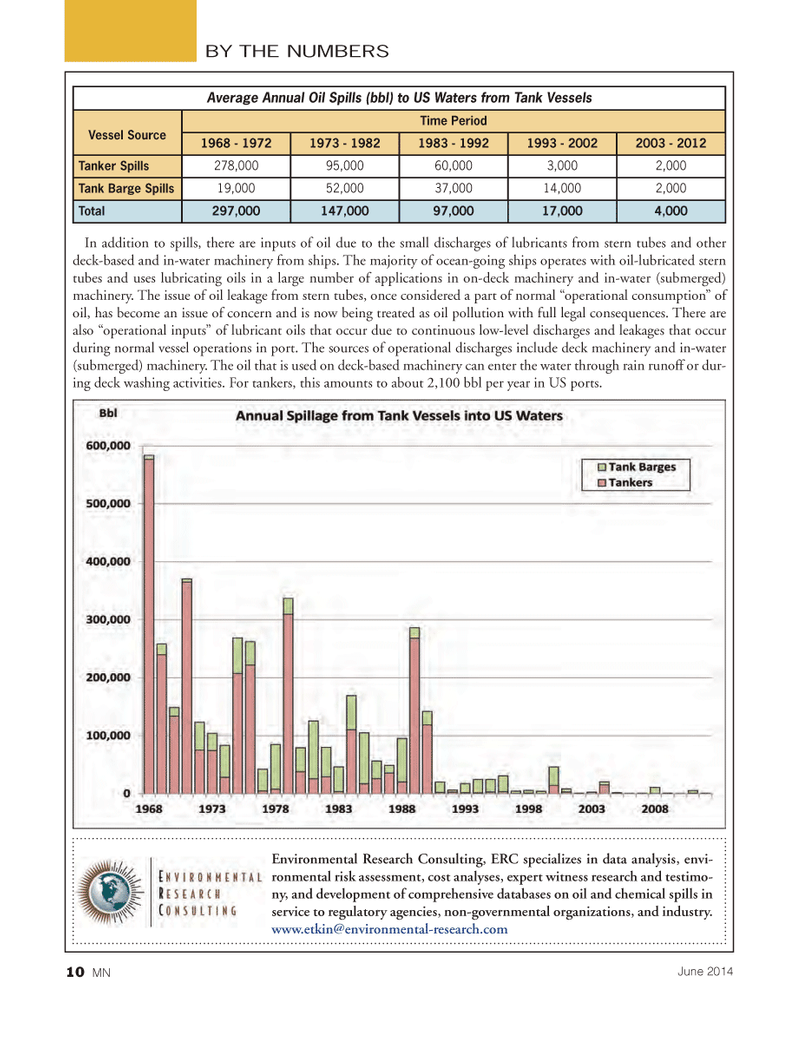
Page 10: of Marine News Magazine (June 2014)
Dredging & Marine Construction
Read this page in Pdf, Flash or Html5 edition of June 2014 Marine News Magazine
In addition to spills, there are inputs of oil due to the small discharges of lubricants from stern tubes and other deck-based and in-water machinery from ships. The majority of ocean-going ships operates with oil-lubricated stern tubes and uses lubricating oils in a large number of applications in on-deck machinery and in-water (submerged) machinery. The issue of oil leakage from stern tubes, once considered a part of normal ?operational consumption? of oil, has become an issue of concern and is now being treated as oil pollution with full legal consequences. There are also ?operational inputs? of lubricant oils that occur due to continuous low-level discharges and leakages that occur during normal vessel operations in port. The sources of operational discharges include deck machinery and in-water (submerged) machinery. The oil that is used on deck-based machinery can enter the water through rain runoff or dur- ing deck washing activities. For tankers, this amounts to about 2,100 bbl per year in US ports. BY THE NUMBERSEnvironmental Research Consulting, ERC specializes in data analysis, envi- ronmental risk assessment, cost analyses, expert witness research and testimo- ny, and development of comprehensive databases on oil and chemical spills in service to regulatory agencies, non-governmental organizations, and industry. [email protected] Average Annual Oil Spills (bbl) to US Waters from Tank Vessels Vessel Source Time Period1968 - 19721973 - 19821983 - 19921993 - 20022003 - 2012 Tanker Spills 278,00095,00060,0003,0002,000 Tank Barge Spills 19,00052,00037,00014,0002,000 Total297,000147,00097,00017,0004,000 June 201410 MNMN June14 Layout 1-17.indd 10MN June14 Layout 1-17.indd 105/20/2014 11:57:06 AM5/20/2014 11:57:06 AM

 9
9

 11
11
